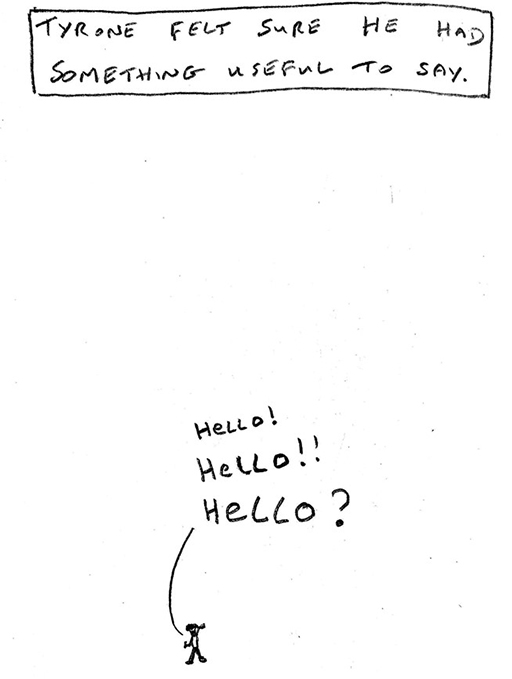1.2 Whose community?
In a study set in 3 South African schools, exploring the work of their school governing body and management team, Setlhodi (2020) drew on the notion of collaborative circles (Farrell, 2001). A collaborative circle is a group of peers, from the same field, who support each other and openly engage in developing a group with a common vision. They critically explore ideas, to enable creative activity that takes their work forward. Setlhodi explored how the two school leadership groups decide on: what needs to be developed and by who, as well as how and when it should happen and what should be prioritised. This collaborative process involved reflecting upon people’s attachment to their attitudes and their understanding of the capacity of the school (and the people in it) to respond to change. Consequently, they had to rethink established visions and strategies to create shared purpose, taking collective responsibility for the state of the school, acknowledging their interdependence. This involved a creative process of reflection and the development of new routines that initiated their ideas.
As part of this process, the school leaders had to invite inputs to improve these ideas, whilst ensuring the process was agreeable to those involved and could be sustained. To be effective, the leaders needed to know how to influence people as well as how to inspire and oversee collaborative action. They had to want to improve and feel able to persuade people about a call for action, so as to develop and implement the action plan. This included the formation of circles of influence, so that people volunteered their services to support the proposed plan, creating a web of social teams within the school, that were interactive and able to communicate effectively.
Setlhodi identified the need for courage, consistency, preciseness, and honesty in engaging each other in constructive conversation. People’s views needed to be acknowledged, considered, and affirmed. The nature of their conversations needed to be deliberated upon, as did their reception, interpretation, and the degree to which participants were given the chance to fully explain their understandings and views. He suggested that collective action flourishes when people understand what is expected, recognising that less experienced participants may require significant support to be successfully involved in the process. All of this required strong bonds, that encouraged commitment and trust-based relationships.
Another issue raised in Video 1 in Activity 1 was about working with people from outside the immediate school setting, for example visiting another school with a consultant or attending a training programme. Looking across a dozen research and development projects in secondary schools, Schenke et al (2016), talked about projects in which school leaders, teachers, researchers, and advisers took over each other’s tasks, and often had a deep level of cross-professional exploration. They suggested that there are four types of cross-professional collaboration that take place in the examination of practice:
- School-directed -with external people as supporters, supervisors, or critical friends,
- School- and researcher-directed – with external partners as co-collaborators, sharing responsibilities,
- School- and adviser-directed – with external advisors in control of achieving goals set by school management,
- Researcher-directed - with external partners following their own commercial or academic interests.
In thinking about these kinds of collaborations, you may also have considered something that has not been mentioned so far (and is the title of this section), communities of practice (Lave & Wenger, 1991). In the following paper, drawing on the work of Richard McDermott, they suggest that a successful community of practice includes people who:
- focus on topics of vital interest to the community members
- are facilitated by a well-respected community member
- create time and encouragement so people can participate properly
- build on the core values of the discipline community
- get key thought leaders involved
- build personal relationships among community members
- contain an active passionate core group
- use forums for thinking together as well as systems for sharing information
- are technically easy to access and contribute to, and
- create real dialogue about cutting edge issues.
This seems to encapsulate many of the issues raised above. So, let’s explore this a bit further.
Activity 2 Whose community?
Read Akinyemi, A., Rembe, S., Shumba, J. and Adewumi, T. (2019) ‘Collaboration and mutual support as processes established by communities of practice to improve continuing professional teachers’ development in high schools [Tip: hold Ctrl and click a link to open it in a new tab. (Hide tip)] ’, Cogent Education, 6(1), p. 1685446.
Focus on pages 7–16, from the start of Results to the end of Conclusion. As you are reading, think about the following questions and make notes:
- In what ways are the characteristics associated with a successful community of practice in evidence?
- In what ways do the teachers and school leaders participate effectively?
- What ideas and experiences raised in this article challenge your expectations of a successful community of practice?
Discussion
At times this paper presents its’ findings in a very descriptive manner. It makes it clear that people are working well in their communities of practice. It is clear too that most of them attend regularly, and that they value the outcomes. They talk about mutuality and encouragement for instance. But there is not a lot of evidence about what is happening in this community, and very little to suggest it represents the successful characteristics identified earlier in the paper. There are some concerns that point in the other direction too. For example, they talk about people feeling exposed, humiliated, and worried about workload. They talk about it as an event organised for them, with the outcomes being about gaining skills and knowledge. In contrast, a study in Sweden (Lelinge & Alwall, 2022), highlights the importance of mutual commitment and joint work, as well as sharing experiences and materials. The school principals recognised that providing staff with opportunities to participate actively in school decisions and being supported in professional development increased job satisfaction and self-confidence. By being involved in discussions in collaborative groups, staff also became aware of issues such as power relations that they had previously not considered.
An interesting challenge for members of communities of practice is how those on the margins are brought into the main body of the community. Lave and Wenger refer to this as a process of peripheral participation. People need time to figure out the rules of the community and how to get their voice heard. For instance, a study looking at people joining policy communities (Aydarova et al, 2022), showed how people initially felt that they were observers, learning rules of engagement and tactical strategies to engage with other policymakers. They talked of learning rituals and the importance of tact and respect. It was important for them to have mentors, role models and guides in the group, who not only explained things but helped them get their voices heard. At the heart of this experience was having the confidence and capacity to jump in; only then could the newcomers fully participate in the community of practice and enter the policy conversations.

